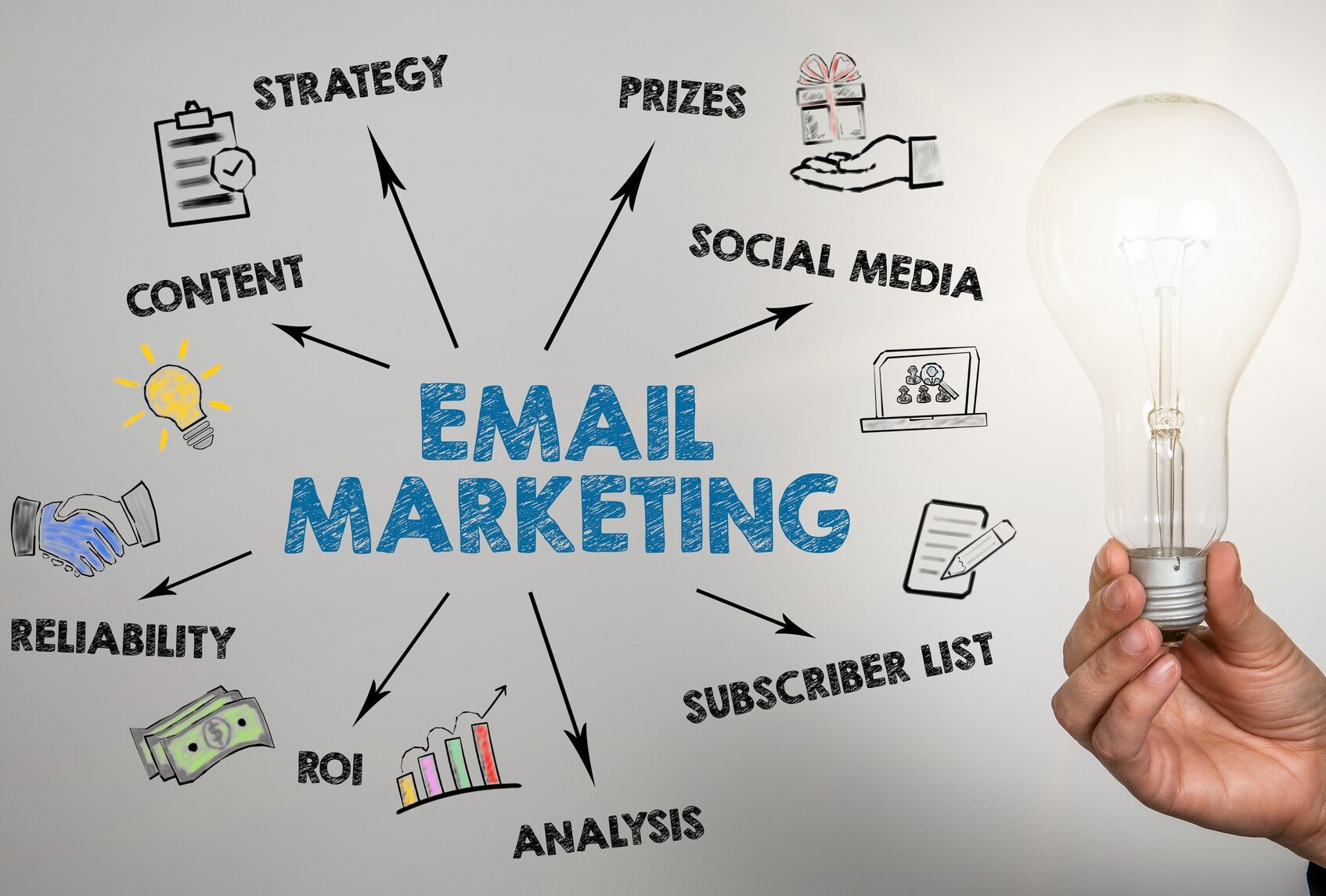No matter who your target audience is, email marketing is most likely a part of your overall marketing strategy.
But, with more and more people learning about and interacting with social media posts and some people automatically deleting things in their “promotions” folder, is email marketing really worth it in the 21st century?
The short answer is yes! Read on to learn why email marketing should remain a part of your marketing plan.
What is email marketing?
Simply put, email marketing can be defined as any email communication sent to a potential customer with the intention of converting them into a sale. But as a marketer, it’s best to think of email marketing as a personalized communication flow that builds a relationship of trust between you, your brand, and your contact.
How does email marketing work?
There are two main types of email marketing: inbound and outbound. The input is generally used by B2C brands, while the output is usually for B2B companies.
We will mainly focus on inbound marketing, but the thing to know about outbound marketing is that it is often used for email content marketing to engage with other businesses for collaboration and backlinks.
Otherwise, when starting out with email marketing, you first need to gain email subscribers. So, you create email marketing campaigns that target the type of people who have signed up to receive your emails.
After doing some a/b testing for your email marketing campaigns, you should start to get familiar with what works with your particular clientele and be able to craft messages that are best suited to your goals.
But is email marketing worth it in a world where there are so many other options? Let’s look at some benefits.
Benefits of email marketing
Email marketing is just one of many channels that can be used in a digital marketing strategy, but it is potentially the most effective. Some of the benefits of using email marketing include:
- Email has an average ROI of $44 for every $1 spent.
- Nearly all Americans check email at least once a day, and many Millennials and Gen Z-er prefer email advertising over other types.
- Email is accessible: Customers don’t need to leave home or be tech-savvy to interact with your marketing materials.
- Nearly a third of Americans recently visited a company’s store or site after receiving an email. This may seem small, but remember: they probably wouldn’t have appeared without the email.
Email Marketing Best Practices and Strategies
If you want your email marketing campaign to be successful, you need to set yourself up for success by following email marketing tips regarding best practices and strategies.
Ask before sending an email
Have you ever received an email, and when you unsubscribed, you had to check “I never signed up for these messages?” It’s so annoying and feels invasive. Users may wonder: “How did they get your email address? What other information do you have? Why should you trust this company? “
So if you want your email campaign to be successful, ask permission before you send that first email.
Even if your current email list is small, never ever buy mailing lists. Also, if you ask them to “enter your email address to get 20% off your first purchase” or similar, make it very clear when doing so, you sign them up for other advertising or a subscription
Customize your messaging
Personalize emails to your subscribers. Forbes compiled a great list of statistics regarding personalization expectations, both for email and other parts of your brand (like your website’s product recommendations). Some highlights include:
- 70% of Millennials are tired of companies sending irrelevant emails
- 71% of all consumers consider personalization before reading or even opening branded emails.
- Some marketers claim that personalized emails have generated up to a 760% increase in revenue.
- Brands report up to 202% improved conversions when using personalized email calls-to-action
With email marketing automation, you can track your contacts’ email and website behavior to create relevant messages for them. This allows you to segment your lists so that you can only send useful emails to certain groups of people.
Another way to ensure your message is personalized is with an Email Drip Campaign, which sends emails only when triggered by specific events.
Consider how often you send emails
Too often, marketers execute invasive and ineffective email blast marketing. One of the 10 commandments of email marketing is “You will remember that ‘timing is everything’” for good reason: customers want to hear from you, but they don’t want to hear from you constantly.
While it may seem counterintuitive, fewer emails often means more engagement. So less really is more!
Don’t waste anyone’s time
Keep your messages short and to the point. The number of consumers using mobile devices is growing and more than half of email opens now happen on a mobile device. Therefore, your best way to communicate is through concise, conversational and relevant messages.
Look at your metrics
If you’re not tracking your email marketing KPIs, you won’t know how effective your email marketing strategy was. Fortunately, many email marketing packages and platforms offer reporting capabilities, so you’ll know what’s working and eliminate what’s not.
Email Marketing History and Trends
These days it’s hard to imagine life without email, but email marketing has a history that continues to evolve.
In 1971, Ray Tomlinson sent the first email. So what did the message of this historic leap in communication say? Tomlinson says it was “something like QWERTYUIOP”.
Seven years later, Gary Thuerk, Marketing Manager for Digital Equipment Corp, sent the first email blast promoting DEC machines to 400 users via the Arpanet. The promotional email worked, generating $13 million in sales.
In the early 2000s, spam was becoming a big problem. So, in 2003, President George W. Bush signed the CAN-SPAM Act into law as part of a national effort to combat the flood of unsolicited email.
Marketers knew they needed to adjust their email marketing strategies if they wanted to reach their audience.
Then came 2020. A lot happened that year, but let’s talk about the Email Marketing Renaissance. Permission-based marketing, also known as inbound marketing, has changed the way marketers and consumers interact with each other.
Email plays an important role in the inbound buyer’s journey. By staying in touch with interested prospects through the right types of emails, you can help build relationships and drive leads closer to conversions.


